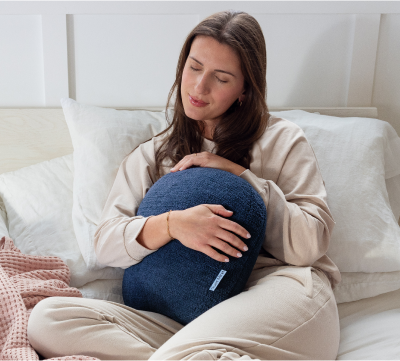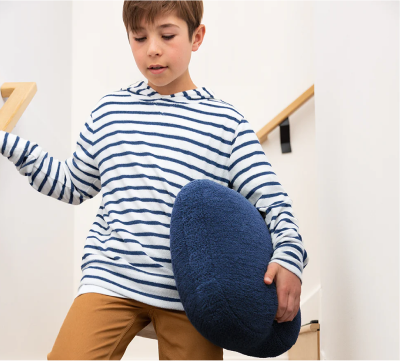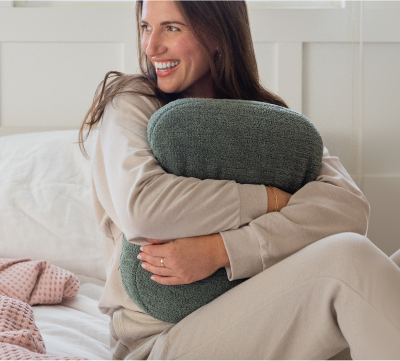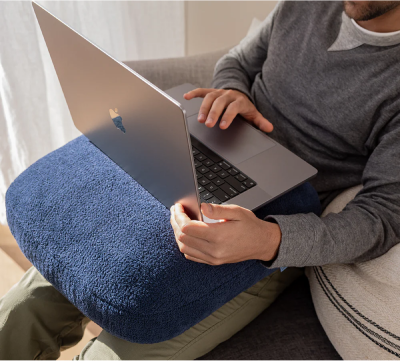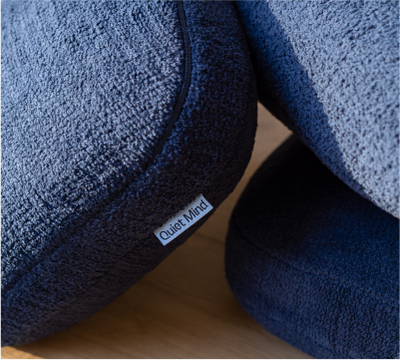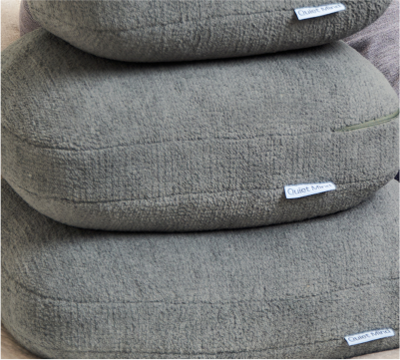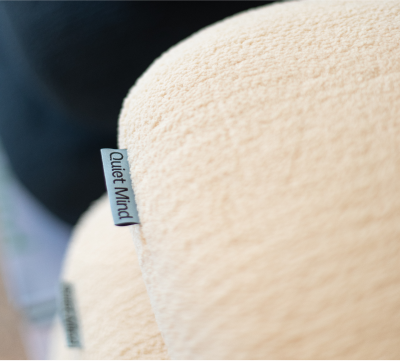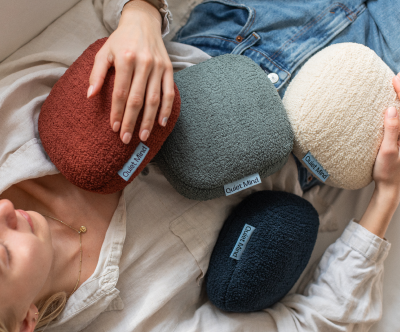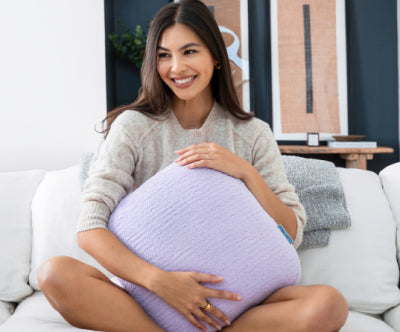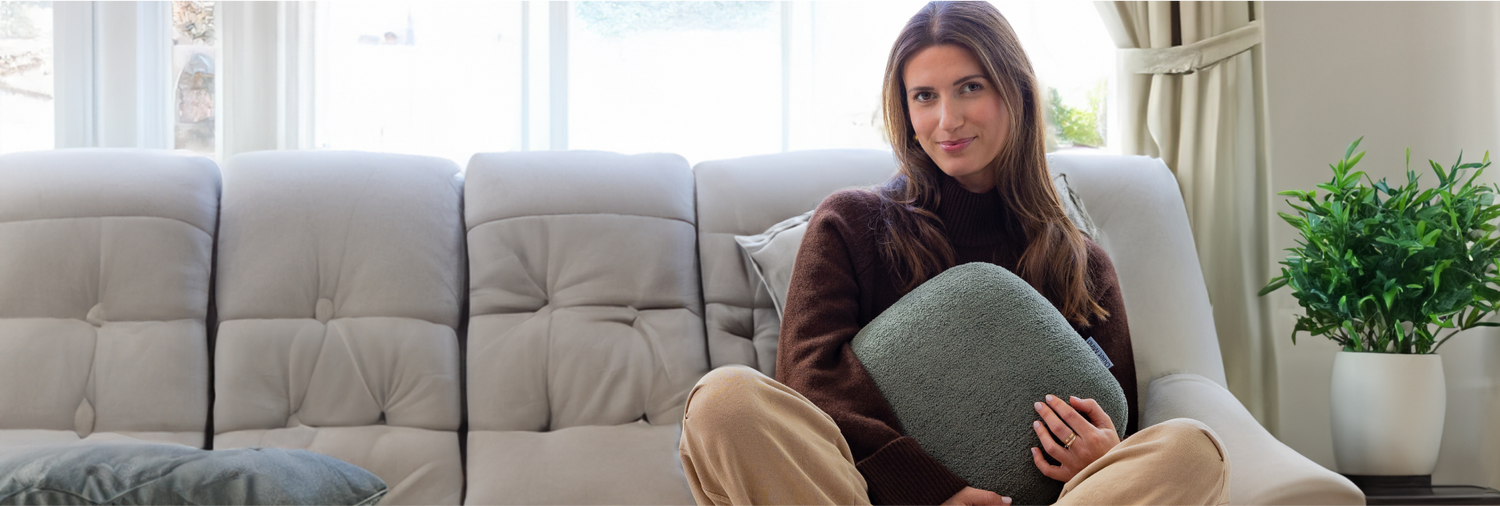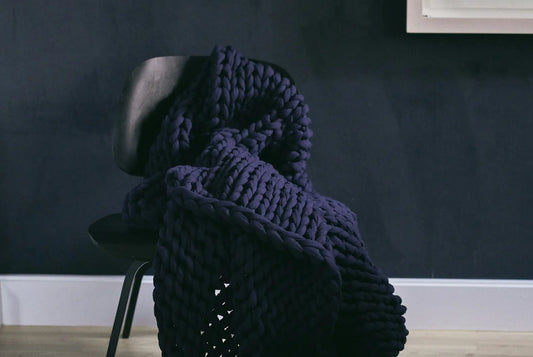Sleep is a biological necessity, not just a nightly routine. It shapes your mood, sharpens your focus, and supports everything from immunity to emotional regulation. Yet, so many of us treat it as an afterthought.
This guide offers a grounded approach to better rest. From understanding your body’s natural sleep architecture to using sensory tools like weighted pillows or ambient soundscapes, every section is designed to help you sleep more deeply and wake up feeling restored.
Key Takeaways
- Quality sleep boosts cognitive function, immune health, and emotional resilience.
- Aligning your bedtime routine with your natural sleep cycle can improve rest.
- Tools like weighted pillows, blackout curtains, and white noise machines help create a sensory-rich sleep environment.
- A personalized approach—one that considers biology, behavior, and environment—is the most sustainable path to better sleep.
Why Sleep Matters More Than You Think
Sleep is not a passive state - it’s an active healing process. Each night, your body carries out a carefully choreographed sequence of tasks: repairing tissue, regulating hormones, consolidating memories, and managing inflammation. When sleep suffers, so does your ability to function, heal, and think clearly.
How Sleep Affects the Body and Brain
|
Function |
Why It Matters |
|
Memory consolidation |
Your brain files away the day’s experiences, turning short-term memories into lasting ones. |
|
Emotional regulation |
Without adequate rest, your ability to handle stress and emotions diminishes. |
|
Immune function |
Sleep triggers cytokine production—key for fighting off infections and recovering faster. |
|
Physical repair |
Deep sleep allows muscles to recover, tissues to heal, and energy to be restored. |
The Ripple Effects of Sleep Deprivation
An estimated 50 to 70 million Americans live with chronic sleep disorders. Even mild sleep loss can impair how you think, feel, and function. Chronic deprivation makes those effects harder to notice - but more damaging in the long run.
- Difficulty concentrating or retaining information
- Increased risk of metabolic disorders like diabetes
- Hormonal imbalances that increase cravings for sugar and processed foods
- Weakened immune response
Sleep is not just about feeling better the next day. It's about protecting your long-term health.
The Science of Sleep: What’s Really Going On?
Each night, your brain cycles through multiple stages of sleep, each with its own purpose and benefits. Understanding these stages can help you make informed choices about your bedtime routine, environment, and habits.
The Sleep Cycle Explained: Light, Deep, and REM Sleep
Your body moves through several sleep cycles each night, typically lasting 90 minutes per cycle. Here’s how it works:
- Light Sleep: The transition from wakefulness to rest. Breathing and heart rate slow, and muscles begin to relax.
- Deep Sleep: This is when your body repairs tissue, restores energy, and boosts immune function.
- REM Sleep: The most active brain stage—REM helps regulate emotions and supports memory consolidation. Dreaming usually occurs here.
Each stage is essential. Skipping one, especially deep or REM sleep, can leave you feeling foggy or unrefreshed—even after a full night in bed.
Why You Might Struggle to Enter Deep Sleep
Several factors can prevent your body from dropping into deep, restorative sleep:
- Elevated cortisol from late-night stress or screen time
- Irregular bedtimes that disrupt your circadian rhythm
- Environmental disruptions such as bright light, noise, or discomfort
This is where your sleep environment becomes key. A weighted pillow, for example, helps the nervous system downshift by applying gentle, evenly distributed pressure - a technique known as deep pressure stimulation (DPS). It’s a sensory cue to the brain that it’s safe to relax, helping ease you into deeper sleep stages more consistently.
How to Sleep Better Naturally: Daily Habits That Work
Improving sleep doesn’t require a radical lifestyle overhaul - just consistent, thoughtful shifts that align with how your body is designed to rest. Align your routine with your body’s natural rhythm to improve sleep quality and wake with more energy.
When to Stop Using Your Phone Before Bed
Screens disrupt sleep more than most people realise. Blue light exposure delays melatonin release, making it harder for your body to wind down naturally.
- Power down screens 2–3 hours before bed whenever possible
- If needed, use night mode or blue light filters
- Replace screen time with grounding rituals like reading or journaling
Evening Routines That Help You Wind Down
The body responds to rhythm. Creating a consistent pre-sleep routine trains your nervous system to expect rest. Some calming, proven techniques:
- Reading a physical book in soft, indirect lighting
- 10 minutes of light stretching or breathwork
- Listening to ambient soundscapes or guided meditation
The key is consistency—rituals work best when repeated nightly. Think of it as sending a soft signal to your body: it’s time to let go.
The Role of Exercise, Food & Light Exposure
|
Factor |
Action |
Why It Matters |
|
Exercise |
Move daily, ideally outdoors. Avoid intense workouts within 3 hours of sleep. |
Enhances slow-wave sleep and reduces sleep onset latency. |
|
Food |
Avoid caffeine after 2 PM. Opt for lighter meals in the evening. |
Prevents digestive disruption and supports melatonin production. |
|
Light Exposure |
Get natural light early in the day. Dim lights 1 hour before bed. |
Anchors your circadian rhythm and boosts sleep hormone regulation. |
Regular movement—even a brisk 30-minute walk—has been shown to support deeper, more restorative sleep. Just be mindful of timing: late-night workouts can spike adrenaline and delay the onset of sleep, especially for those prone to insomnia.
Optimising Your Sleep Environment with Sensory Tools
Your sleep space should feel like an invitation to rest - not just visually, but through every sense. Creating the right sensory cues in your environment can support melatonin production, lower cortisol, and make it easier for your body to transition into sleep.
The Power of Darkness, Quiet, and Cool Temperatures
Your body sleeps best in the dark, in silence, and slightly cool air.
- Darkness signals melatonin release. Use blackout curtains or wear an eye mask to block light pollution.
- Quiet supports uninterrupted sleep. If total silence isn’t possible, try a white noise machine to buffer disruptions.
- Cool temperatures (around 60–67°F or 16–19°C) help reduce core body temp and initiate sleep faster.
These aren’t luxuries—they’re biological levers that directly affect sleep quality.
Sensory Tools That Make a Difference
Integrating sensory tools into your bedroom can transform how your body experiences rest:
- Eye masks: A snug, light-blocking mask removes visual input and promotes melatonin production.
- Weighted pillows and blankets: Gentle pressure calms the nervous system and helps reduce midnight tossing.
- White noise machines: Rhythmic background sound can block disruptive noises and soothe the mind.
- Scent: Lavender, in particular, has been shown to reduce heart rate and blood pressure, making it easier to fall asleep.
Quiet Mind’s Lavender Weighted Pillow combines deep pressure therapy with a subtle natural scent—helping calm the body while grounding the mind. For many, this simple shift becomes a non-negotiable part of their bedtime routine.
Finding the Best Sleeping Positions for Your Body
There’s no universal “correct” sleep position—but the way you sleep does affect comfort, spinal alignment, and even the appearance of your skin over time. Finding the right position is about reducing strain on your joints while supporting your body’s natural curves.
Side Sleeping: Benefits, Risks & Facial Impact
Side sleeping is one of the most common and comfortable positions. It can ease digestion, reduce snoring, and is often recommended during pregnancy or for those with sleep apnea. But it’s not without trade-offs.
Potential downsides:
- Uneven pressure on one side of the face can contribute to fine lines or mild asymmetry over time
- Compression of the arms or shoulders may lead to tingling or numbness
- Misaligned hips or neck without proper support can lead to discomfort
What helps:
- A supportive pillow under the head to maintain neck alignment
- A second pillow between the knees to keep the hips neutral
-
A weighted pillow can provide grounding comfort while reducing unnecessary movement—supporting better posture and stillness through the night
Numbness While Sleeping on Your Side — Causes & Fixes
If your arm or hand frequently falls asleep during the night, it’s likely from pressure on nerves in the shoulder or neck.
Try this:
- Choose a pillow with enough loft to keep your head aligned with your spine
- Slide a small pillow or folded towel under your arm to relieve shoulder compression
- Adjust your sleeping angle to reduce pressure on one side
Creating space around pressure points can reduce nighttime numbness and help you sleep more comfortably—and more deeply.
Struggling to Sleep on Your Back? Here’s Why
Back sleeping is often recommended for spine health and facial symmetry, but not everyone finds it comfortable. If you’re waking up stiff or with lower back pain, the issue may be poor support.
Simple fixes:
- Place a flat pillow under your knees to relieve pressure on the lumbar spine
- Use a medium-firm mattress or lumbar-supporting cushion to maintain the spine’s natural curve
-
Add a light weighted pillow across your chest for grounding comfort—it can reduce fidgeting and help train your body to settle into this position over time
Best Positions to Relieve Stomach Pain at Night
Discomfort from bloating or heartburn can interfere with falling—and staying—asleep. Sleep position can help manage symptoms:
|
Issue |
Recommended Position |
Helpful Tools |
|
Bloating |
Side sleeping with knees slightly bent |
Full-body or knee support pillows |
|
Heartburn |
Back sleeping with head elevated |
Wedge pillow or adjustable base |
Avoid lying flat after a large meal. Elevation and gentle support make a meaningful difference in both comfort and digestion.
When Sleep Issues Might Be Something More
Sometimes, sleep struggles are more than a bad habit. If you’ve made lifestyle changes, adjusted your environment, and tried natural remedies without results, it may be time to dig deeper.
Signs It’s Time to See a Specialist
- Chronic insomnia lasting more than three weeks
- Loud snoring or gasping during sleep (potential signs of sleep apnea)
- Waking up unrefreshed, even after 7–9 hours
- Mood swings, weight changes, or brain fog with no clear cause
These symptoms may point to underlying issues like hormonal imbalances, anxiety disorders, or sleep-disordered breathing. Early intervention makes a meaningful difference in treatment outcomes.
What to Do When Nothing Works
Start by tracking your sleep patterns for two weeks:
- What time you go to bed and wake up
- How long it takes to fall asleep
- Nighttime wake-ups
- Daytime energy and mood levels
- Bring this log to a qualified professional—they may recommend sleep studies, blood work, or cognitive behavioral therapy for insomnia (CBT-I). Sometimes, the most powerful step toward better sleep is asking for help.
Towards Better Sleep
Better sleep isn’t about chasing perfection—it’s about creating the right conditions for rest to happen naturally. That means understanding how your body moves through sleep cycles, building habits that support those rhythms, and designing a sensory environment that encourages calm.
Whether it’s stepping away from screens earlier, being more intentional with your routine, or introducing tools like weighted pillows or lavender to your space—small, consistent changes can lead to deeper, more restorative sleep.
At Quiet Mind, we believe sleep should feel effortless—not like another item on your to-do list. With the right setup, your body knows what to do. Sometimes, it just needs the right support.
Further Insights
Explore more guides to deepen your understanding of rest and recovery. These articles offer calm, practical insights for better sleep and wellbeing.
- Why can't I sleep even though I'm tired?
- Does magnesium help you sleep?
- How little sleep can you survive on?
- How can I cure poor sleep?
- Why can't I sleep?
- How to sleep with neck pain?
- How much do dogs sleep?
Frequently Asked Questions (FAQs)
What are the best practices for improving sleep hygiene?
Stick to a consistent sleep-wake schedule, even on weekends. Create a wind-down routine with calming activities and limit screen exposure before bed. Keep your room cool, dark, and quiet—and avoid caffeine and heavy meals late in the day.
How does exercise affect sleep quality?
Regular movement improves both sleep duration and quality. Aim for at least 30 minutes of moderate exercise most days, but avoid intense workouts in the three hours before bed.
How can I create a sleep-friendly environment?
Use blackout curtains, white noise machines, and temperature control (60–67°F is ideal). Sensory cues like weighted blankets or soft lighting help signal to the body that it’s time to rest.
What sleeping position is best for my back health?
Back sleeping supports spinal alignment, especially with a pillow under your knees. If you prefer side sleeping, use a firm pillow to support the neck and place another between the knees to reduce hip strain.
What signs indicate I should see a sleep specialist?
Loud snoring, gasping, chronic insomnia, or frequent fatigue despite adequate sleep are all red flags. A specialist can assess for conditions like sleep apnea, restless leg syndrome, or hormonal imbalances.
Can dietary choices impact my sleep quality?
Yes. Caffeine, alcohol, and sugar can all disrupt sleep. Meanwhile, foods rich in magnesium (like leafy greens, pumpkin seeds, or bananas) and those that support melatonin production (like tart cherries) may help promote better rest.
What should I do if I can’t sleep even when I’m tired?
Get out of bed and do something calming in low light—a few pages of a book or soft stretching. Avoid screens and try not to clock-watch. Once you feel sleepy again, return to bed. Over time, this trains your brain to associate your bed with rest—not frustration.
